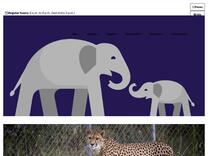Primates and Peanuts: Testing Tool IQ | Smithsonian’s National Zoo and Conservation Biology Institute https://nationalzoo.si.edu/animals/news/primates-and-peanuts-testing-tool-iq
keeper Erin Stromberg and University of Michigan graduate student Missy Painter have
keeper Erin Stromberg and University of Michigan graduate student Missy Painter have

